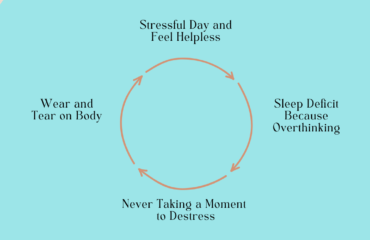Do you experience the winter blues? If so, you may suffer from seasonal affective disorder (SAD). Rather than letting this seasonal depression control your life, we are sharing with you how to prevent and manage seasonal affective disorder.
What is Seasonal Affective Disorder (SAD)?
SAD is a type of depression triggered by the changing seasons, typically from the warm sunny months to the dreary winters. SAD affects about 5% of the population of the USA, starting in young adulthood and often occurring more often in women. Here in Alaska, we get some seriously long and dark winters. Unfortunately, studies have shown that SAD affects nearly 10% of Alaska’s population.
SAD is a type of depression, so it is common to experience symptoms of sadness, anxiety, carbohydrate cravings, weight gain, fatigue, irritation, loss of interest, sleeping problems, trouble concentrating, feelings of hopelessness, and even suicidal thoughts.
Sadly, scientists have yet to fully understand what triggers SAD to occur in the first place. However, there are theories that it could be due to a biological clock change due to a lack of sunlight, a brain chemical imbalance due to less sunlight-induced serotonin, vitamin D deficiency, a melatonin boost, or just negative thoughts brought on by the winter season.
How to Prevent Seasonal Affective Disorder
Luckily, there are ways to prevent, or at least combat, SAD. We recommend these tips and strategies.
Create a Realistic Daily Routine
It is common for people to lose their healthy routines in the winter due to a lack of access to the outdoors, social connections, or other positive forms of engagement. We suggest structuring your day with activities like work, exercise, relaxation, learning, and socializing. You can help your body adjust to a regular routine through the proper balance of an organized schedule.
Maintain a Consistent Exercise Regime
Exercise is essential for combating SAD during the winter months. By getting 30 minutes of exercise three times a week, you will help to release endorphins (the feel-good hormone) in the brain while decreasing stress and anxiety. If you find that you get especially down at a particular time each day, schedule that space to get up and moving. It will provide a welcome physical and psychological tension release.
Soak Up Sunlight When Possible
While the winter keeps the sun’s warm rays away from us, there are still small parts of the day where we can get outside or at least sit in a sun-touched window. Natural sunlight helps the body regulate melatonin levels more than artificial light. If access to natural light is challenging, consider participating in light therapy to supplement your light intake.
Eat a Well-Balanced Diet
During the winter, comfort foods full of carbs and sugars are often craved. Unfortunately, this can lead to an unbalanced diet and weight gain, which will only compound the negative feelings of SAD. While we won’t deny you bread or a cookie occasionally, you will want to focus on a balanced diet, including fresh fruits, vegetables, whole grains, lean proteins, and nuts, with limited junk food intake. You may also want to speak with your primary care physician about taking vitamin supplements such as a multivitamin or vitamin D.
Spend Time with Loved Ones
During the winter, especially after the madness of the holidays, people often feel isolated and connect less with their loved ones. We recommend making regular plans with your favorite people, whether a daily chat with your spouse, a weekly coffee date with a friend, or a monthly phone call with a family member.
Additionally, be sure to share your feelings with your loved ones. If you are feeling anxious or sad, telling someone about it could be helpful or relieving.
Lastly, we encourage you to speak if counseling and therapy will help to better your emotional state, especially if you are experiencing thoughts of self-harm.





